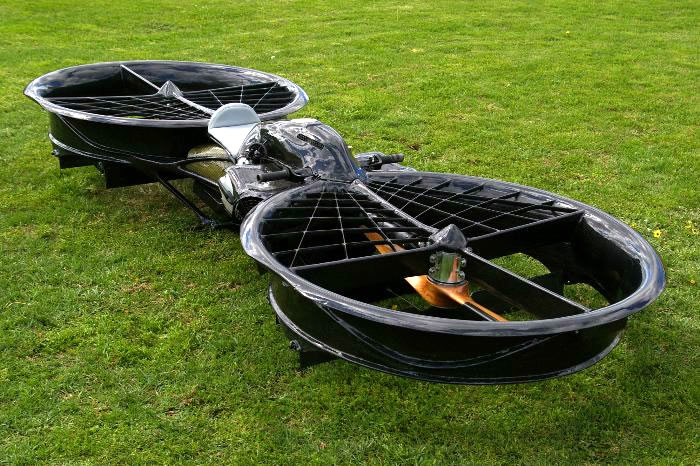Hoverboards have been a dream put into people’s imagination by movies and other science fiction works, but now they have become a reality. By using the concepts of magnetism, hoverboards have been developed that levitate a few inches off the ground while allowing the rider to maneuver across metal surfaces. This technology would not just be limited to hoverboards, but could be used to keep buildings safe from earthquakes and provide cheaper alternatives for Maglev Trains.
Introduction
From a young age, many have dreamed of futuristic inventions that would revolutionize the world: flying cars, commercialized spaceships, and even hoverboards. These previously out-of-reach technologies have started to come within our grasp in recent years with SpaceX developing commercial space flights, Maglev Trains that go hundreds of miles per hour, and, finally, the hoverboard. The mainstream idea of a hoverboard was brought to us by Marty McFly in the movie Back to the Future II, and it has now become a reality. By using massive electromagnets, the board is able to maintain a steady levitation above conductive materials and can support the weight of a fully-grown person and move freely across certain surfaces. The new technology that this hoverboard tests can be used not only for cooler ways to get around town, but also safety improvements to buildings and cheaper production of Maglev Trains.
History of hover technology
Before the hoverboard or the Maglev Train, there was the hovercraft, an object Christopher Cockrell developed in the 1950’s. Using a fan at the back for steering and propulsion, a massive fan on the bottom, and a rubber skirt to trap the air below the vehicle, the hovercraft was able to create a cushion of air between itself and whatever surface it was floating on; this design allowed it to go over ocean waves or any irregularities in the ground [1]. When it was first created it was determined that the hovercraft could cross the English Channel in less than two hours, faster than some ships today [1].
Maglev Trains became the next major installation to the collection of hovering vehicles, this time using magnets instead of air cushions. Developed in 1971 by a German company called Transrapid International, Maglev technology developed quickly as countries competed with each other to develop faster trains and more efficient systems of transportation [2]. By creating a track lined with electromagnets – and sensors to determine when to activate these magnets – the magnetic trains are able to hover and go along tracks at magnificent speeds, upwards of 360 miles per hour, revolutionizing how people are able to cross countries [2].
Hover technology did not stop there; it began to focus on smaller vehicles that seem to come right out of a science fiction novel. The last part of this futuristic journey was Chris Malloy’s first functional hoverbike, as seen in Fig. 1. He created one working prototype that can successfully lift someone, and he is making another that will be more stable. His innovations show that this technology could come to play a large role in transportation, particularly with moving over rough terrain. Inspired by the technology behind helicopters, the original hoverbike had two large turbines in the front and back that generated lift and steered [3]. It was hypothesized that the bike would be able to reach 10,000 feet and travel at 173 miles per hour [4]. With the development of the second prototype, this bike may enter the market soon as a more reliable option.
Maglev Trains became the next major installation to the collection of hovering vehicles, this time using magnets instead of air cushions. Developed in 1971 by a German company called Transrapid International, Maglev technology developed quickly as countries competed with each other to develop faster trains and more efficient systems of transportation [2]. By creating a track lined with electromagnets – and sensors to determine when to activate these magnets – the magnetic trains are able to hover and go along tracks at magnificent speeds, upwards of 360 miles per hour, revolutionizing how people are able to cross countries [2].
Hover technology did not stop there; it began to focus on smaller vehicles that seem to come right out of a science fiction novel. The last part of this futuristic journey was Chris Malloy’s first functional hoverbike, as seen in Fig. 1. He created one working prototype that can successfully lift someone, and he is making another that will be more stable. His innovations show that this technology could come to play a large role in transportation, particularly with moving over rough terrain. Inspired by the technology behind helicopters, the original hoverbike had two large turbines in the front and back that generated lift and steered [3]. It was hypothesized that the bike would be able to reach 10,000 feet and travel at 173 miles per hour [4]. With the development of the second prototype, this bike may enter the market soon as a more reliable option.
[image=1381 file=”hoverbike.jpg” placement=”left” zoom=”thumbnail-700x280.jpg”]Figure 1: Functional hoverbike with two turbines [5].[/image]The final development in hover technology is the hoverboard. Earlier in 2013, Haltek Industries tried to develop one that used the same concepts as the hoverbike by using turbines at the bottom of the board, but it was unsuccessful and there have been no recent developments on this project from Haltek. The electromagnetic hoverboard, however, may succeed in its place.
Development
The hoverboard has been an untouchable dream with appearances in popular television shows and movies. There have even been hoaxes developed, one of the more recent ones being by a fake company called HUVr Tech, which had a video that included famous names such as Tony Hawk, Terrell Owens, Mark Cuban, and more [5]. No one has been able to develop an actual, working hoverboard until now. The real hoverboard was created in 2014 by a group of engineers through one man’s desire to use innovative ideas to improve structural stability. Greg Henderson was trying to discover ways to prevent buildings from being damaged during earthquakes when he began looking at patents for electromagnetic levitation in objects such as Maglev Trains that hover and minimize friction, allowing the train to reach incredible speeds[6]. He realized that if a building could be levitated by powerful electromagnets, the shaking earth would not be able to cause any structural damage[6]. However, levitating an entire building is an ambitious project and would require massive magnetic force and financial backing, so he decided to test it on something a little smaller to capture investors’ interests: a hoverboard.
How it works
Using Magnetic Field ArchitectureTM (MFA), a technology that Henderson coined and patented, the hoverboard is able to maintain a steady level of levitation above certain surfaces. MFA uses coils of wire that have very high levels of electricity alternating through them constantly. A magnetic field is then produced, pointing directly out of the center of the coil as seen in Figure 1 [7].
Once this magnetic field is created, the presence of another opposite magnetic field causes a repelling force which allow the coils to levitate if there is enough energy surging through the wires [9]. This means that attaching these coils to the bottom of a board would require an opposite magnetic force; where would that come from?
Certain highly conductive materials are able to produce this opposing magnetic field without connecting electricity directly to them [9]. Copper and aluminum conduct electricity very well, allowing a current to pass through them when they encounter a changing magnetic field. As the magnetic field changes in the initial coils, the current through the copper or aluminum plate will change[9]. This results in an alternating magnetic field in the plate in the opposite direction of the coils causing a repulsion between them [9]. Now imagine strapping four of these coils onto a board and sending massive amounts of current through each coil as seen in Figure 2.
Certain highly conductive materials are able to produce this opposing magnetic field without connecting electricity directly to them [9]. Copper and aluminum conduct electricity very well, allowing a current to pass through them when they encounter a changing magnetic field. As the magnetic field changes in the initial coils, the current through the copper or aluminum plate will change[9]. This results in an alternating magnetic field in the plate in the opposite direction of the coils causing a repulsion between them [9]. Now imagine strapping four of these coils onto a board and sending massive amounts of current through each coil as seen in Figure 2.
[image=1382 file=”MagneticFieldCoil.jpg” placement=”center”]Figure 2: Magnetic field through a coil of wire[8].[/image]This would create large amounts of repulsion between the board and the ground – provided that the ground is aluminum or copper – enough to keep 200 lbs hovering a few inches above the ground [7]. The actual amount of energy used has not been disclosed by the inventor, but Rhett Allain, a physics professor at Southeastern Louisiana University, believes there would need to be 300 watts of energy coursing through the coils to generate this degree of lift [9]. In comparison, it takes about 120 watts to power a television and 750 watts to power a microwave, therefore a large battery is essential to power the hoverboard.
Limitations
While the image of Marty McFly jetting around town on his hoverboard may seem so close with this new development, the technology is still a few years away. As mentioned earlier, the hoverboard needs to be over a highly conductive surface such as copper or aluminum in order to generate the opposing magnetic fields and repulsion that make it hover. Unless towns began paving their roads with these materials, the hoverboard could only be used in settings designed for them [11]. Additionally, the hoverboard’s battery can only operate for 10-15 minutes and takes 2 hours to recharge [12]. The hoverboard is only in the early stages of development, and, while these issues may be solved over time, this technology is already being implemented in other aspects of society.
The future of hover technology
As mentioned before, the main purpose for this newly developed MFA technology was not to build hoverboards for people to fly around on, but to develop a representation of a way to keep buildings safe in the instance of earthquakes. By levitating a building by a few centimeters off the ground during an earthquake, the entire building’s structural integrity can be preserved as it is kept clear of the shaking and rolling ground. Using the same concept of the hoverboard, this would be achievable, but would require large amounts of energy to perform. There has been no word on the magnitude of that project, but, with the success of the hoverboard, this application of magnetic field technology may appear in the not-so-distant future[10].
The benefits do not stop there. Maglev Trains that use the concept of electromagnetic propulsion and levitation currently costs about $750,000 per meter of track due to the necessary magnetic sensors and electricity that make it work [6]. With the technology from the hoverboard, using passive metals as a track rather than Maglev’s current technology, these trains would be able to run at about $10,000 a track as estimated by Greg Henderson and his team [6]. Using this system would cost 1.33% of what it currently costs and could revolutionize transportation systems around the world.
The benefits do not stop there. Maglev Trains that use the concept of electromagnetic propulsion and levitation currently costs about $750,000 per meter of track due to the necessary magnetic sensors and electricity that make it work [6]. With the technology from the hoverboard, using passive metals as a track rather than Maglev’s current technology, these trains would be able to run at about $10,000 a track as estimated by Greg Henderson and his team [6]. Using this system would cost 1.33% of what it currently costs and could revolutionize transportation systems around the world.
Conclusion
Levitating buildings in order to protect them from earthquakes may be a daunting task, but by focusing on the development of the hoverboard to demonstrate the power and validity behind this idea, the technology may be funded soon and become available for use. While the hoverboard may not be able to zip around town like in the movies, it would still provide a basis for the technology to develop in other fields. Not only could it be used for protecting buildings, but also for reducing costs of electromagnetic transportation that are already present in today’s society such as Maglev Trains. Overall, it could become the driving force for improving the safety and security of buildings, and it could substantially reduce the costs of travel.
References
-
- [1] 1959: Hovercraft Marks New Era in Transport. BBC. [Online]. Available: http://news.bbc.co.uk/onthisday/hi/dates/stories/june/11/newsid_4333000/4333329.stm
- [2] Terry Brown, John Dacquisto. (2014, February 4). Maglevs: The Future of Flying Trains. Illumin. [Online]. 14(2). Available: http://illumin.usc.edu/247/maglevs-the-future-of-flying-trains/
- [3] Chris Wood. (2014, August 19). A Closer Look at the Malloy Aeronautics Hoverbike. Gizmag. [Online]. Available: http://www.gizmag.com/closer-look-malloy-aeronautics-hoverbike/33414/
- [4] Tafline Laylin. (2014, January 22). Crazy Hoverbike is Capable of Flying to 10,000 Feet. Inhabitat. [Online]. Available: http://inhabitat.com/crazy-hoverbike-is-capable-of-flying-to-10000-feet/
- [5] Daily Mail Reporter. (2011, June 30). World’s First Flying Motorike: Helicopter Pilot Invents the ‘Hoverbike’ in his Garage. Daily Mail. [Online]. Available: http://www.dailymail.co.uk/sciencetech/article-2009009/Chris-Malloy-hoverbike-Helicopter-pilot-invents-worlds-1st-flying-motorbike-garage.html
- [6] Matt Novak. (2014, March 4). What is this Fake Hoverboard Company actually Promoting?. Paleofuture. [Online]. Available: http://paleofuture.gizmodo.com/what-is-this-fake-hoverboard-company-actually-promoting-1536282711
- [7] Aaron Tilley. (2014, October 21). Architect’s Dream of Levitating Houses Turns into a Hoverboard. Forbes. [Online]. Available: http://www.forbes.com/sites/aarontilley/2014/10/21/hendo-hoverboard/
- [8] Magnetic Levitation of a Stationary or Moving Object , by D. Gregory Henderson. (2014, September 18). U.S. Patent 0 265 690 [Onine]. Available: http://www.google.com/patents/US20140265690
- [9] John Fuchs. (2011, December 30). Ultrasonics-Transducers-Magnetostrictive. John’s Corner. [Online]. Available: http://www.ctgclean.com/tech-blog/wp-content/uploads/Magnetic-Field-Coil.jpg
- [10] Rhett Allain. (2014, October 24). The Physics of the Hendo Hoverboard. Wired. [Online]. Available: http://www.wired.com/2014/10/physics-hendo-hoverboard/
- [11] (2014, November 5). Hendo Introduces the World’s First Hoverboard, Beyond, [Online]. Available: http://www.beyonddesignchicago.com/hendo-introduces-worlds-first-hoverboard/
- [12] Evan Rawn. (2014, October 24). Architect Develops the World’s First Hoverboard. Archdaily. [Online]. Available: http://www.archdaily.com/561115/architect-develops-the-world-s-first-hoverboard/
- [13] Angus Mackenzie. (2014, October 22). Hendo Hover: The World’s First Real Hoverboard. Gizmag. [Online]. Available: http://www.gizmag.com/hendo-hoverboard-prototype/34352/




